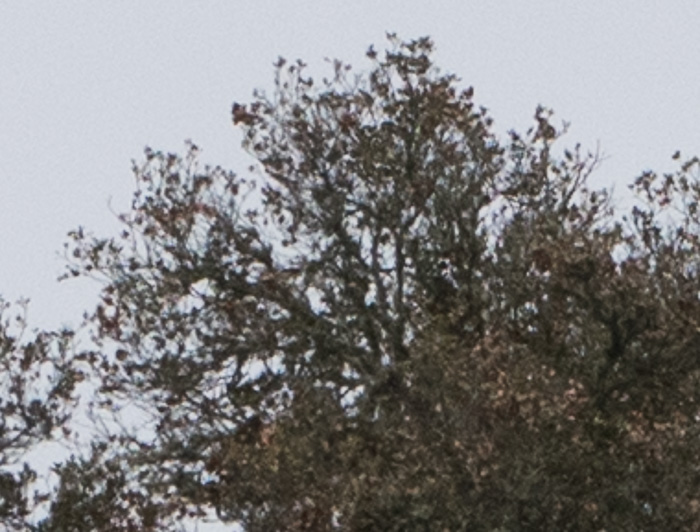Yesterday I posted a set of pictures with the Nikon AF-S 200-400 mm 1:4G lens on the Nikon D810. The images were intended to get an handle on center and corner sharpness of that lens with a distant subject at various f-stops. I made the images for yesterday’s post at ISO 640, about a stop short of ETTR, to keep the shutter speed up. Of course, I used EFCS, to keep vibration down. I used a RRS heavy-duty carbon fiber tripod and an Arca Swiss D4 geared head. The tripods rubber feet — no spikes here — rested on concrete pavers installed over a concrete slab.
When I made the series that I posted yesterday, I also made a series at ISO 64 one stop down from ETTR, which gave me slower shutter speeds. Previous testing had indicated that, with the Nikon AF-S 400mm f/2.8 lens on the D810, that EFCS didn’t help much at shutter speeds faster than 1/125 second, but that it helped a lot at slower shutter speeds.
Does that same situation obtain in the real world with the 200-400?
Let’s take a look.
The scene, with the lens set to 200mm:
The center, at ISO 640, f/5.6 at 1/400, magnified to 200%:
The same part of the image ISO 64, f/5.6 at 1/30
Not much difference at all. EFCS is doing its job.
Let’s try stopping the lens down one stop.
The center, at ISO 640, f/8 at 1/200, magnified to 200%:
And at ISO 64, f/8 at 1/15, magnified to 200%:
Still hanging in there.
Now, with the lens set to 400 mm:
The center, at ISO 640, f/5.6 at 1/500, magnified to 200%:

And at ISO 64, which brings the shutter speed down to 1/50:

Looking good. Now let’s stop down a stop:


Maybe not quite as good at 1/50.
How about f/11?


This is flat amazing! F/11 isn’t such a sharp aperture, but the EFCS is keeping the slow exposure degradation to almost everything the lens can deliver.






Leave a Reply